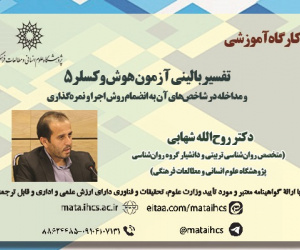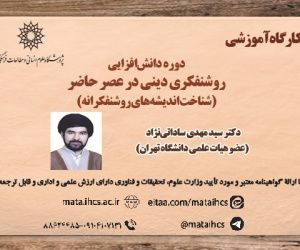تطبیق مؤلفه های تربیت دینی حاکم بر سند تحول بنیادین آموزش و پرورش با دیدگاه ابن سینا (مقاله علمی وزارت علوم)
درجه علمی: نشریه علمی (وزارت علوم)
آرشیو
چکیده
هدف اصلی این پژوهش، مطالعه تطبیقی تربیت دینی از منظر ابن سینا و سندتحول بنیادین بوده است و برای دست یابی به این هدف، از روش تحقیق تطبیقی بردی به منظور پاسخ به سؤالات پژوهش استفاده شده است.جامعه آماری این پژوهش، سند تحول( 1390)و آثارابن سینا بوده است.نمونه گیری به شیوه هدفمند انجام شده است. ابزار پژوهش نیز فیش برداری بوده که یافته های حاصل از تحقیق را به صورت کیفی مورد تحلیل قرارداده است.نتایج پژوهش نشان داد که تربیت دینی در سندتحول در معنای عام( نه در معنای خاص) موردتوجه قرارگرفته است.نتایج دیگر پژوهش نشان داد که تربیت دینی درمنظومه فکری ابن سینا به معنای فراگیری قرآن و معارف دینی و عمل به فرمان الهی به منظور شناخت خود، خدا، خالق و خلق جهت سعادت دنیوی و اخروی است. نتایج پژوهش حاکی از آن است که سندتحول در بخش هایی با دیدگاه ابن سینا همخوانی دارد از اشتراکات آن ها می توان به مؤلفه هایی نظیر؛ منبع تعیین ارزش ها( آیات قرآنی و متون دینی)، هدف تربیت( رسیدن به حیات طیبه و سعادت)، اصول تربیت( توجه به تفاوت های فردی، شناخت استعدادها و علائق متربیان)، مراحل تربیت( با توجه به نظام معیاراسلامی و بر اساس مراحل رشدشناختی متربیان) و ابعادتربیت(بعد فردی و اجتماعی) اشاره کرد. اما با وجود چنین اشتراکاتی، تفاوت هایی نیز وجود دارد. در سندتحول روش آموزش دین متکی بر روش های گوناگون عقلی، نقلی و شهودی ولی، در نگاه سینوی روش آموزش دین بیشتر مبتنی بر عقل است. ابن سینا بیشترین وظیفه تربیت دینی فرد را متوجه خانواده می داند. این در حالی است که سند نقش دولت را در تربیت دینی پر رنگ نشان داده است. نتیجه کلی حاکی است با توجه به نقاط اشتراک و افتراق، به نظر می رسد که نظام آموزشی باید شرایطی فراهم نماید تا فردی که تحت تعلیم وتربیت قرار می گیرد بتواند استعدادهای بالقوه خود را شکوفا ساخته و با دارا بودن آزادی واختیار منطقی، فردی متدین، مؤمن، اندیشه ورز تربیت شود.The Comparison of religious education governing the document of fundamental transformation of education with Ibn Sina's views
The main goal of this research was the comparative study of religious education from the point of view of Avicenna and the fundamental revolution, and to achieve this goal, Bardi's adaptive research method was used to answer the research questions.The research was the document of transformation (1390) and Ibn Sina's works. Sampling was done in a purposeful way. The tool of the research was survey which analyzed the findings of the research in a qualitative way. The results of the research showed that religious education was considered in the general sense (not in the specific sense) of the change document. Other results of the research showed He said that religious education in Ibn Sina's intellectual system means learning the Qur'an and religious teachings and acting on God's command in order to know oneself, God, the Creator and creation for worldly and hereafter happiness. The results of the research indicate that the text of transformation is consistent with Ibn Sina's point of view in parts. Their commonalities include components such as The source of determining values (Qur'anic verses and religious texts), the goal of education (achieving a good life and happiness), the principles of education (paying attention to individual differences, recognizing the talents and interests of educators), the stages of education (according to the Islamic standard system) and based on the developmental stages of educators) and the dimensions of education (individual and social dimensions). But despite such commonalities, there are also differences. In Sindavahl, the method of religious education relies on various intellectual, narrative, and intuitive methods, but in Sinoy's view, the method of religious education is more based on reason. Ibn Sina considers the family to be the most responsible for the religious upbringing of a person. Meanwhile, the document has shown the role of the government in religious education.







